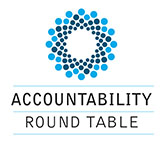Civil Society Engagement
ART’s objectives
To see that decision-making by parliaments and the executive of government is consistent with the principle that in public office they must act in the public interest.
To ensure that there are high standards of integrity and transparency and that civil society has meaningful engagement and participation in decision-making processes, particularly those related to accountability, major reforms and a just society.
The current problem
Large sections of the Australian community and civil society organisations feel isolated from and alienated by Government, especially the Federal Government. The public has lost trust in governments to make policy decisions that are in the national interest rather than narrow political and vested interests. Current public policy decision-making and implementation centralises too much power in Government and its agencies and disempowers people affected by their actions.
The reforms that are needed
Public participation must be developed and practiced in accordance with the commitment to support civic participation that Australia signed up to as one of the four Open Government Partnership Declaration commitments. Federal Government should apply the Commitment by:
- valuing public participation of all people, equally and without discrimination, in decision-making and policy formulation.
- recognising that public engagement, including the full participation of women, increases the effectiveness of governments, which benefit from people’s knowledge, ideas and ability to provide oversight.
- making policy formulation and decision making more transparent, creating and using channels to solicit public feedback, and deepening public participation in developing, monitoring and evaluating government activities.
- protecting the ability of not-for-profit and civil society organizations to operate in ways consistent with our commitment to freedom of expression, association, and opinion.
- creating, selecting and applying mechanisms to enable greater collaboration between governments and communities, civil society organizations and businesses, drawing on the public participation spectrum (below) as appropriate to each circumstance.
The Spectrum of Public Impact and Public Participation Goals … increasing level of public impact →
Inform |
To provide the public with balanced and objective information to assist them in understanding the problem, alternatives, opportunities and/or solutions |
Consult |
To obtain public feedback on analysis, alternatives and/or decisions |
Involve |
To work directly with the public throughout the process to ensure that public concerns and aspirations are consistently understood and considered. |
Collaborate |
To partner with the public in each aspect of the decision including the development of alternatives and the identification of the preferred solution. |
Empower |
To place final decision-making in the hands of the public. |

